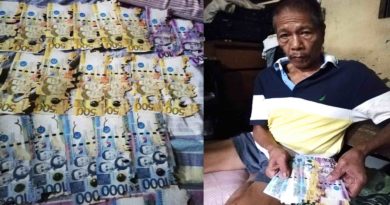The basics: bank deposits
By Carlos Gonzales
Sure you know everything about deposits. Or do you? Here’s a short primer to get you up to speed.
What they are
They are bank products that allow you to place your money for safekeeping, pay for goods and services, and earn interest. The common types of products are:
• Savings Account: This is where you place your money (or if you’re employed, usually where your payroll is deposited) for temporary use. It’s very liquid but it also usually pays low interest. You get a passbook or a statement of account, plus an ATM card.
• Special Savings Account: Also referred to as premium savings account. There is a tiered structure such that you get higher interest the higher your balance. But there are withdrawal restrictions.
• Current Account: Better known as a checking account. You get a checkbook which you used to write checks to pay for transactions. Usually you don’t earn interest.
• Negotiable Order of Withdrawal (NOW): A checking account that earns interest, but there are restrictions to the number of checks you issue per month.
• Time Deposit: You get a certificate as proof of ownership. It’s like a savings account except you can only withdraw the money when it matures, usually from 30 days to up to five years.
• Certificate of Deposit (CD): It’s like a time deposit, but negotiable, meaning you can sell it in the open market.
What you earn
You earn a fixed interest on bank products, except for some checking accounts.
What they cost
• Usually, there’s a minimum maintaining balance (called average daily balance or ADB), except for some savings accounts, below which the bank charges a fee.
• You also pay if there’s no movement in the savings or checking account for a long time (which is labeled dormant).
• You pay if you close the account within one month of opening it.
• If you use the ATM, you’ll get slapped with fees for using another bank’s machine or another ATM network.
• If you have an ATM card, but you withdraw over the counter even if the network is not down or you withdraw less than the daily maximum limit, you pay a fee.
• And if you issue a check and there’s not enough money in your account, you’ll be charged for insufficient funds, whether or not you were able to subsequently fund it.
• If you issue a check, then issue a stop payment order (SPO), you pay.
• If the account has restrictions on the number of withdrawals you can make, and you exceed them, there’s a surcharge.
• You also pay for new checkbooks and getting a print out of your statement of account.
• Banks have devised a lot of other fees and charges other than those listed here. So check with your bank.
• There’s a 20% withholding tax on the interest you earn, except for deposit products that have a maturity of more than five years.
What’s good
• They’re insured by the government through the Philippine Deposit Insurance Corporation up to P250,000 per person.
• They’re typically liquid, particularly for savings and current accounts, so if you need access to your money, this is one of the quickest ways to get it.
• They’re useful for everyday transactions like paying for goods or for bills, without having to carry a wad of paper bills in your wallet. That’s why they’re referred to as settlement accounts. You can use a check, your ATM card (which in some banks double up as debit cards, plus you can do transactions on the machine itself), or through Internet, phone, or mobile banking.
What’s bad
• They don’t pay well, except for some long-term special savings products and CDs (which, on the other hand, are not as liquid anymore since you have to hold them till maturity). So you can’t beat inflation. In the case of checking accounts, they don’t pay anything at all.
• The fees and surcharges can really hurt. If you don’t balance your checkbook regularly or if you strike ATMs randomly, you’re apt to ramp up charges.
N is for negotiable, D is for deposit
That’s quite a mouthful. If you’re wondering what a long-term negotiable certificates of deposit (LTNCD) offered by a few banks is all about, breaking it down per term will help (sing along with me):
• LT is for Long-term: In this case, we’re talking about five years and one day, making the interest income exempt from withholding tax, if it’s kept that long.
• N is for Negotiable: That means you can sell them before the maturity date at the current market price.
• Certificate of Deposit: Better known as a CD. It’s a bank deposit product. So it’s insured by the PDIC (up to P250,000) and it earns interest, much higher than a regular bank deposit. It is also a debt instrument offered by a bank. But CDs, as we commonly think of, are short-term and non-negotiable. This is a new animal.
So an LTNCD is like a deposit in that a bank issues it and it is covered by the PDIC. Yet, it’s also like a bond because it’s negotiable and long-term and pays interest every quarter. In other words, it’s a hybrid product. See, that wasn’t so hard.



